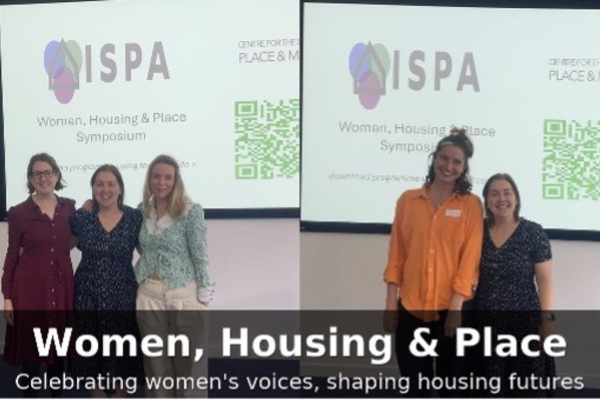What does the future hold for housing? That was a question that generated three contrasting answers and lots of debate in a session I chaired at the Housing Studies Association conference in York last week.
If you’re from Scotland, the future looks bright. Robert Black, chair of the independent Housing and Wellbeing Commission, spoke about the extraordinary impact of its work ahead of the Scottish Parliament elections. The SNP and Labour are vying with each other to accept its target of 9,000 affordable homes a year, including 7,000 actually affordable homes for social rent. In English terms, once you scale up for a far larger population, that’s the equivalent of Brandon Lewis pledging 100,000 social rented homes a year.
In England’s dreams, of course, but which dreams? Competing visions were on offer from Chris Walker of Policy Exchange and Anna Minton of the University of East London.
As he must have known in advance, Chris was (almost) on his own in supporting government policies in front of this audience of housing researchers. Speaking about the future of housing associations, which he argued need to double their output of new homes if England is to get close to 250,000 homes a year. That was of course precisely the argument made by Brandon in welcoming the latest proposed mega-merger between L&Q, Hyde and East Thames.
The question was not so much what housing associations are for as what they should be for, he said. In a housing crisis the government view was that they should be about housing delivery but as George Osborne made clear last year they don’t have a particularly good record and should be made to do more.
For all their claims to private sector status (and with due respect to the ONS) the government sees them as quasi-public sector organisations that should become more efficient whereas associations see themselves as private, independent businesses that can’t be compared with each other. A more grown-up conversation was needed about the government’s priorities.
Those include a return to private sector classification but he played down reports that the government could still press for privatisation. ‘Ironically, although it has been quite controlling and directive, the government actually wants housing associations off the books quite quickly. My own view is that they won’t use this as an opportunity for a wholesale shake-up but do what they need to do.’
He said the government was fine with large surpluses provided they are used to build more homes and the deal on the right to buy was a positive sign. However, it was also redefining what ‘affordable’ is in a much more amorphous way with lots of different products. That means real opportunities to create mixed communities and greater social cohesion not just in new housing but also in the existing social housing stock.
Anna Minton is the author of Ground Control: Fear and Happiness in the 21st Century City, a book about the privatisation of public space via private sector-led development. She was speaking here about of the ‘regeneration’ of social housing in London, a process she argued was seeing hundreds of council estates demolished while 230 residential towers went up in a boom partly fuelled by the dirty money revealed in the Panama Papers.
But she also had a more general point illustrated by a picture of the Red Road flats in Glasgow and the plan to demolish them live on TV during the Commonwealth Games. The powers that be changed their minds on that but ‘the fact that demolition could be seen as a triumph to be celebrated shows what we think of council housing’.
Regeneration in London was generating huge population shifts that were only just beginning to filter through, she said, illustrating that with maps showing the dispersal of tenants from the Heygate estate and the even greater diaspora of leaseholders.
So why were we demolishing homes in the middle of a housing crisis? The government narrative was that estates were not good places to live and were stifling aspiration but Labour councils were doing regeneration too and Labour peer Lord Adonis was backing city villages. ‘It’s state-led regeneration based on the idea of the rent gap: how much the land is currently worth versus its potential value,’ she said.
Residents saw consultation as a sham while the Housing and Planning Bill determining their future was debated at two in the morning and the government redefined ‘affordable housing’ for its own purposes. But it was all part of a wider process that saw space as a place for investment. This was summed up by plans for the private Garden Bridge and by the transformation of the Heygate into ‘Elephant Park’ with prices ranging from £750,000 to £1 million for a two-bed flat.
The Q&A that followed mixed some interesting asides with fundamental disagreements. To the surprise of some, Chris conceded that ‘there will always be a place for social rent’. But he added that it shouldn’t be called that and housing associations should be able to set their own rents. Social housing was a ‘post-war construct’ and ‘the very term social isn’t terribly helpful’.
Anna said there was real anger in London and a sense that things were reaching a tipping point. ‘There are all sorts of things we could do outside the straitjacket of the two main parties,’ she said, citing land value tax as one example.
And floating above the fray was Robert Black, looking in at the debate in England from a country that has abolished the right to buy and now sees housing as central to wellbeing on home, community, employment, income, health, education and environmental sustainability.
In two very different countries there are three very different futures.
This blog by Jules Birch was originally posted by Inside Housing on 11th April 2016.






